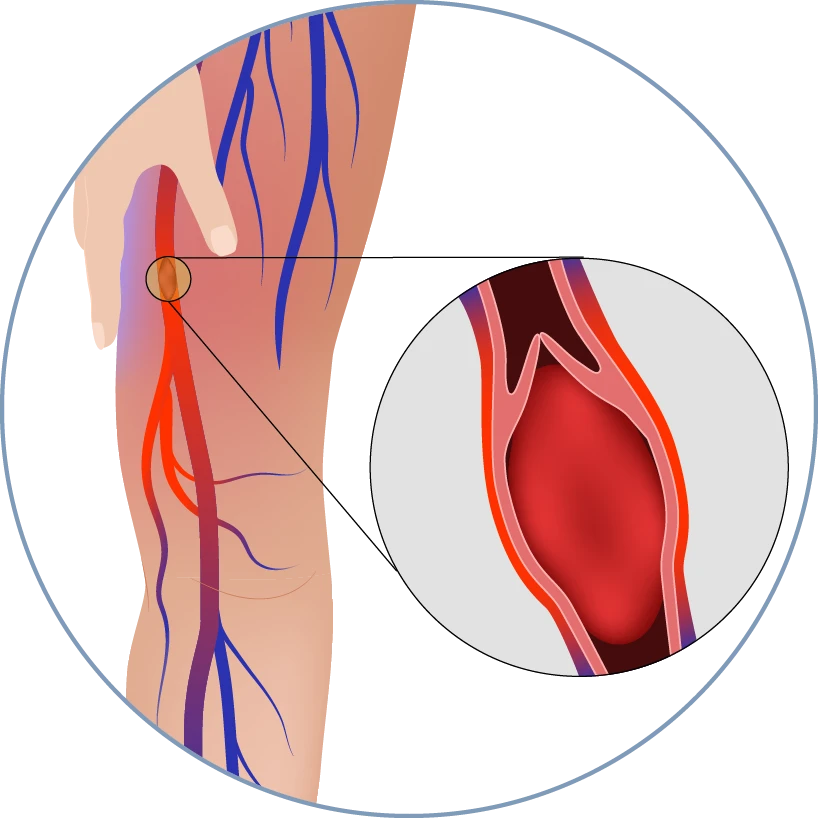Deep Vein Thrombosis
Deep vein thrombosis (DVT) occurs when blood clots form in the deep veins of the body, often in the legs. These veins, located far beneath the skin’s surface, work to return blood from the body to the heart and lungs. A DVT can occur in any deep vein but is most common in the legs, where it can range from affecting a small portion to spanning the entire limb. Typical symptoms of acute DVT include swelling, pain, tenderness, a heavy or tired feeling, changes in skin color, or visible surface veins.


Understanding Post-Thrombotic Syndrome (PTS)
Without proper treatment, nearly half of all DVT patients may develop post-thrombotic syndrome (PTS), a condition marked by chronic leg pain, swelling, redness, and even ulcers. PTS can significantly impact mobility and quality of life, making prevention through timely treatment essential.
Treatment Options for Acute DVT
Acute DVT is typically treated with blood thinners, helping the body naturally break down clots. However, for faster relief and to prevent long-term complications, interventional radiology offers minimally invasive techniques, including:
Angioplasty and stenting: Vein stenosis, or narrowing of the veins, can lead to clot formation. Angioplasty uses a small balloon to widen the vein, and in some cases, a stent (a tiny expandable tube) is placed to keep the vein open and restore blood flow.
Thrombolysis: This advanced technique uses imaging to guide a catheter into the clot, delivering clot-dissolving medication directly. This approach can clear the clot within one to two days, offering a quicker solution compared to traditional methods. Thrombolysis is often monitored in an intensive care setting for patient safety and may be paired with mechanical thrombectomy.
Mechanical thrombectomy: In this procedure, a device is guided to the clot site to break it up into smaller pieces, allowing for removal of the clot.
Inferior vena cava (IVC) filter: For patients unable to tolerate other treatments, an IVC filter may be placed in the large vein that carries blood from the legs to the heart. The filter acts as a net, catching clots before they can reach the lungs, while allowing normal blood flow. Most IVC filters are temporary and are removed once it’s safe for the patient to resume blood-thinning medications.
Ongoing Care for DVT Patients
Some patients may continue to experience symptoms even after the clot has resolved. Follow-up care, including repeat angioplasty or stenting, may be necessary to address lingering issues and improve quality of life.
We Specialize in Results
Schedule a consultation with our expert interventional radiology team to learn more and find out if this innovative treatment is right for you.